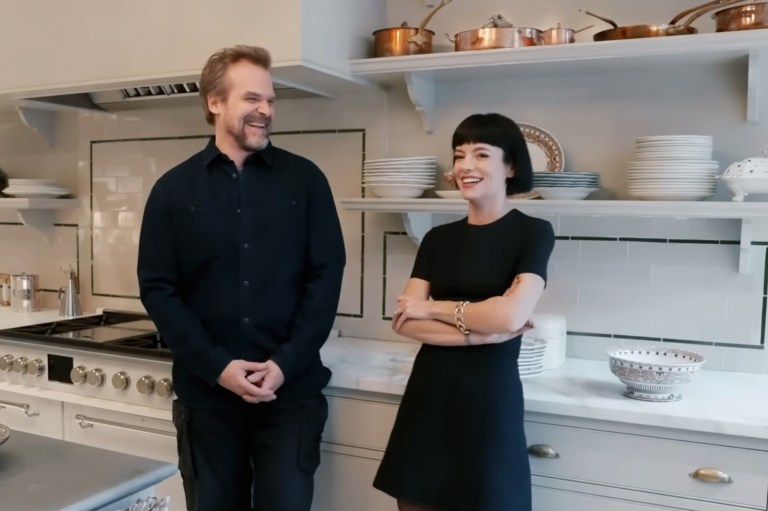
Scene Missing: On The Ambiguity Of “Relationships” Today
Stop me if you’ve heard this one before: you’re out having a fun, drunken night with friends or co-workers and the next morning you wake up staring down at the body of some person whose name you can hardly recall, attempting in vain to put together the blurred pieces that led up to this moment.

Probably the best word to describe 20-something relationships in America today is ambiguous.
Stop me if you’ve heard this one before: you’re out having a fun, drunken night with friends or co-workers and the next morning you wake up staring down at the body of some person whose name you can hardly recall, attempting in vain to put together the blurred pieces that led up to this moment. Then, a few weeks later you are out at a party or bar, and you run into this person again. You begin talking and doing shots and [scene missing], you are lying in bed the next day ordering pizza and watching movies with this practical stranger. Then, it happens again…and again…and by now you’re making actual “plans” to see one another, not just randomly hooking up. However, exactly what it is that you are experiencing together remains entirely unspoken and entirely unclear. But it’s fun, so whatever.
[youtube=http://www.youtube.com/watch?v=FoYZR2JKkDU&w=584&h=390]
These sorts of situations have essentially defined my “dating” experience throughout my 20s, and I have been through this cycle more times than I can remember. This is not meant, however, as a boast, rather a painful admission as I sit here alone today reflecting back on countless missed opportunities resulting from the conflicting expectations, unspoken assumptions and just plain failures to communicate that doomed these “relationships” before they even began. Were we just having fun or was there more to it? Could there have even been more if either one of us had desired it?
Recently I traveled down to our nation’s capitol to check out a panel discussion, called Modern Family: Coupling and Uncoupling in America, exploring the changing nature of marriage and relationships today. While there was very little agreement between the speakers on the merit or demerits of these changes, one thing was universally agreed upon: the most salient feature of these new arrangements is choice. The old, restrictive, Leave It to Beaver-style marriage is gone and is never coming back. And what has replaced it is…? There is no answer for this yet, and what I seemed to be hearing from the majority of the panelists was that the answer will be nothing. It will be entirely up to each and every one of us to decide that for ourselves.
And this is great in theory: we are now free to craft our lives in anyway we choose to benefit us to the highest degree possible. But, at least from what I have seen and experienced, the means we are currently employing to figure this out for ourselves aren’t nearly equivalent to the task with which we are charged. It seems that, more often than not, we are now “sliding, not deciding”: we slide into hooking up with each other; we slide into living with each other; and in the end, we may even slide into marrying. But what’s the point of freedom and choice if we are not going to exercise the rights that accompany it?
It’s been said that the biggest problem with the old marriage arrangement was that the individuals involved were too young and inexperienced to know who they were and what they wanted, which lead, inevitably, to marital discord and unhappiness. The solution that we came up with for this is “cohabitation” – living together before any real commitment is made, as a test-run for marriage to see if we can even stand being under the same roof together. But as this practice has proliferated, a lot of unforeseen issues have arisen.
Despite its numerable faults, in the old marriage arrangement there were at least definitive steps that encouraged conscious decisions to be made and dialogues to be had between lovers before such drastic, life-altering actions were taken. But today, we so often unwittingly slip into some next level of commitment with very little thought or emotion just because it’s convenient or seems to make “rational” sense: we’re already staying over at each other’s place every night, so why do we pay two rents? It sounds like such a no-brainer that this tends to happen with very little discussion as to what this means for the relationship or what each partner wants out of it.
The essence of any good relationship is communication, but the problem is most people hate talking about their feelings – mostly because it is really hard to find the right words, or to even be fully aware of exactly what it is you are feeling. This only becomes possible, though, with at least some level of self-knowledge – reflection on who you are, what you want, where you are going and how you plan on getting there. But the ambiguity, and accompanying laxity, of our new arrangements prevents us from really thinking about these things, instead allowing, and even actively encouraging, us to flounder in an unreflective, unconscious abyss.
As dating and marriage norms in America changed over the last 50 years, cohabitation has increased by about 1500%. Yet despite the great expectations, it has been found that most couples that cohabitate first actually end up being less satisfied with their marriages and more likely to get divorced. This may seem strikingly counterintuitive at first, but since we now so often unthinkingly slip into these situations, it actually makes complete sense. Cohabitation was meant to be a sort of dress rehearsal for the real thing, but if this is how we practice, then what sort of part are we hoping to eventually play? ![]()











